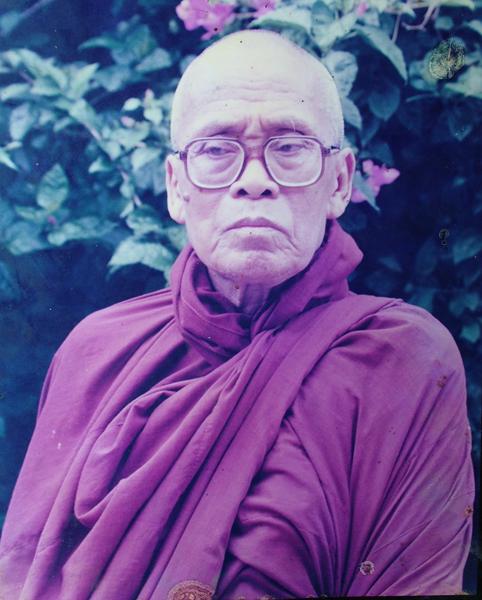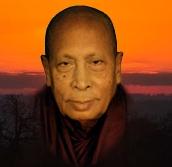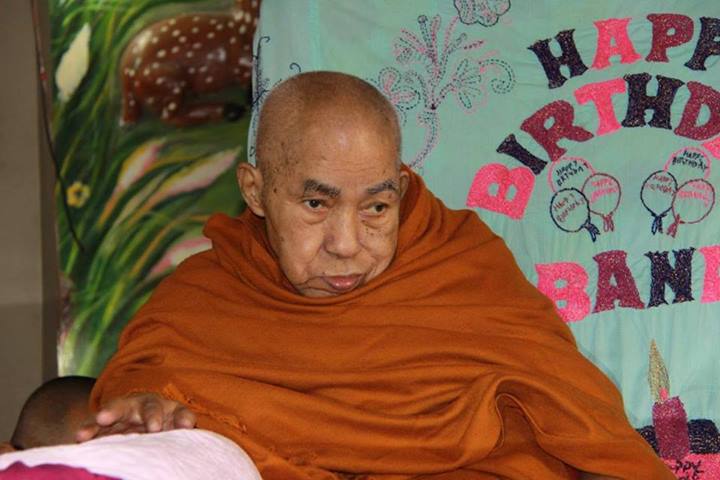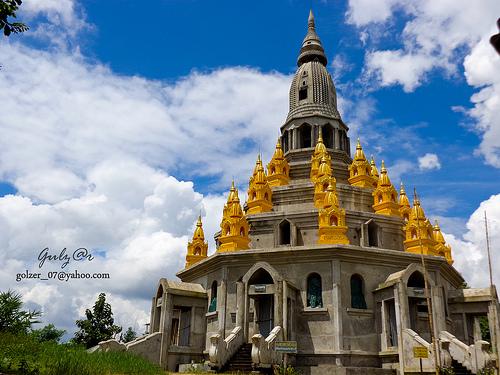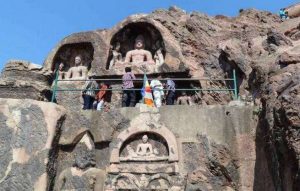Editor’s note: Jnan Nanda completed his BA Hons from the University of Peradeniya, Sri Lanka, and his MA from the University of Hong Kong where he presently teaches Reading in Buddhist Sanskrit Texts as a tutor at the Centre of Buddhist Studies. He also works for Buddhistdoor International. He starts his PhD in July 2014 at The University of Hong Kong.
Part Three: Important Buddhist Figures in Bangladeshi Buddhism
In the final part of our series on Buddhism in Bangladesh, the writer will introduce important Buddhist figures in Bangladeshi Buddhism and the contributions they have made to the thriving Buddhist communities within Bangladesh and the whole nation.
The recent history of Buddhism in Bangladesh records some prominent late Buddhist monks, such as Visuddhananda Mahathera, Joti Pal Mahathera, Rajguru Aggravansa Mahthera and Sadhanananda Mahathera among many others. Visuddhananda Mahathera founded Dharmarajik Sishu Sadhan in Dhaka and Aggrasar Orphanage in Chittagong. The Dharmarajik Sishu Sadhan, now directed by his disciple Suddhananda Mahathera, was the first and largest Buddhist orphanage in Bangladesh at the time of its founding in 1962.
Jotipal Mahathera contributed in various aspects to Bangladeshi society and is hailed locally and internationally for such contributions, including speaking for human rights for all. He campaigned locally and internationally for the independence of Bangladesh during its war with Pakistan in 1971. Besides campaigning for human rights, Jotipal Mahathera also established orphanages, educational institutions and also wrote and translated books, such as a Bengali translation of the Puggalapannatti.
Aggravansa Mahathera was a Tripitakacarya (master of the Pali Canon) and also the royal advisor to the Chief (King) of Chakma Circle in the Chittagong Hill Tracts. Sadhanananda Mahathera, a forest monk, also popularly known as Bana Bhante for his long period of meditation in the forest, was probably the most popular Buddhist monk in the recent history of Buddhism in Bangladesh. Sadhanananda Mahathera was a prominent speaker of the Dhamma, and also spoke out against every evil and corruption that he came across, including the political arena. His voice reached Buddhists of all corners of Bangladesh and the majority of his followers strongly believed that he was an Arahant, which is a controversial topic among many Buddhists even today as there is no evidence of him attaining such an advanced spiritual attainment. Unfortunately, his preaching could not reach far beyond the borders of Bangladesh due to his lack of speaking foreign languages and access to a translator.
Some of the contemporary prominent figures in the Buddhist community in Bangladesh demonstrate that the examples set by their earlier predecessors have not been forgotten. These figures follow in their predecessors’ footsteps to take the Buddhist communities and the nation forward as a whole, whenever possible. Figures such as Proggavansa Mahathera, Proggananda Mahathera and U Panya Jota Mahathera, to name a few, are playing vital roles in leading the Buddhist communities in presentday Bangladesh.
Proggavansa Mahathera is a Buddhist educationalist, emphasizing the establishment of Bhikkhu training centres in both Chittagong (plain) and Chittagong Hill Tracts. Proggananda Mahathera is a social activist who is also the founder and former director of Monoghor Sishu Sadan in Rangamati, the largest Buddhist educational institute in the Chittagong Hill Tracts. Monoghor is dedicated to uplifting the education and culture in the Chittagong Hill Tracts and, since its establishment, numerous students have benefitted. At present, as with Dharmarajika Sisu Sadhan in Dhaka, it houses hundreds of students with in-house educational facilities.
U Panya Jota Mahathera, also popularly known as Ucula Bhante, a former junior assistant judge at the Supreme Court of Bangladesh, is another prominent living figure among the Buddhist communities in the country. Founder and director of an orphanage and a social worker, he gained fame due to his construction of the magnificent Shorno Jadi (Golden Temple) and Ram Jadi in Bandarban in the Chittagong Hill Tracts. Bandarban district is also where the tallest mountain in Bangladesh is situated. There are various other monks who are following in their steps but who cannot be mentioned in a short study of this kind.
The work of the above mentioned Buddhist monks show that monks in Bangladesh occupy a special position in leading the Buddhist community along the right path. Their work further reveals that the monks do play various roles in various endeavours of both social and spiritual development.
The writer hopes that through this series of articles, readers have come to realize that Buddhism, although a minority religion in Bangladesh, is able amidst various conflicts to support and cater to the needs of this thriving (though little known to the outside world) religious community within a Muslim country.
References
1. Barua, Dilip Kumar. (2005). “Ecclesiastical Punishment in Bangladeshi Monastic Life – A Case Study of Patimokka” in Journal of Pali and Buddhist Studies. Society for the Study of Pali and Buddhist Culture, Vol. 49, 48-62.
–––––. (2007). “Modes of Existence of Village Monastery in Bangladesh: A Case Study” in Journal of Pali and Buddhist Studies (21). Society for the Study of Pali and Buddhist Culture, 97-113.
–––––. (2010). “Purnima and Dana Ceremonies: A Study on the Conceptions of Bangladeshi Lay Buddhist” in Ryukoku University Institutional Repository.
2. Barua, Suman Kanti. (2002). “Modes of Existence of Buddhist Monasteries in Bangladesh: A Study of Village Monastery” in The Journal of Pali and Buddhist Studies, (16), 15-28.
3. Chakma, Niru Kuma. (2011). “Buddhism in Bengal: A Brief Survey” in Bangladesh e-Journal of Sociology, Volume 8, Number 1.
4. Chauduri, Sukomal. (1982). Contemporary Buddhism in Bangladesh. Calcutta: Atisha Memorial Publishing Society.
Part One of the article: http://newlotus.buddhistdoor.com/en/news/d/37503
Part Two of the article: http://newlotus.buddhistdoor.com/en/news/d/37633
